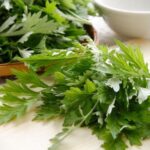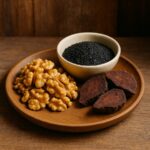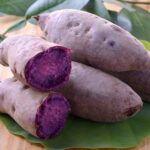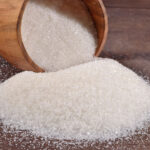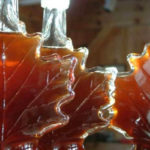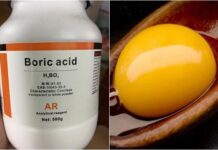On a chilly, rainy day, there’s nothing quite like savoring a steaming bowl of Sủi Dìn to warm your soul. From the very first bite, you’ll be captivated by the rich, nutty flavors of sesame, peanuts, and coconut, perfectly balanced with a touch of sweet syrup—a combination that’s simply irresistible.
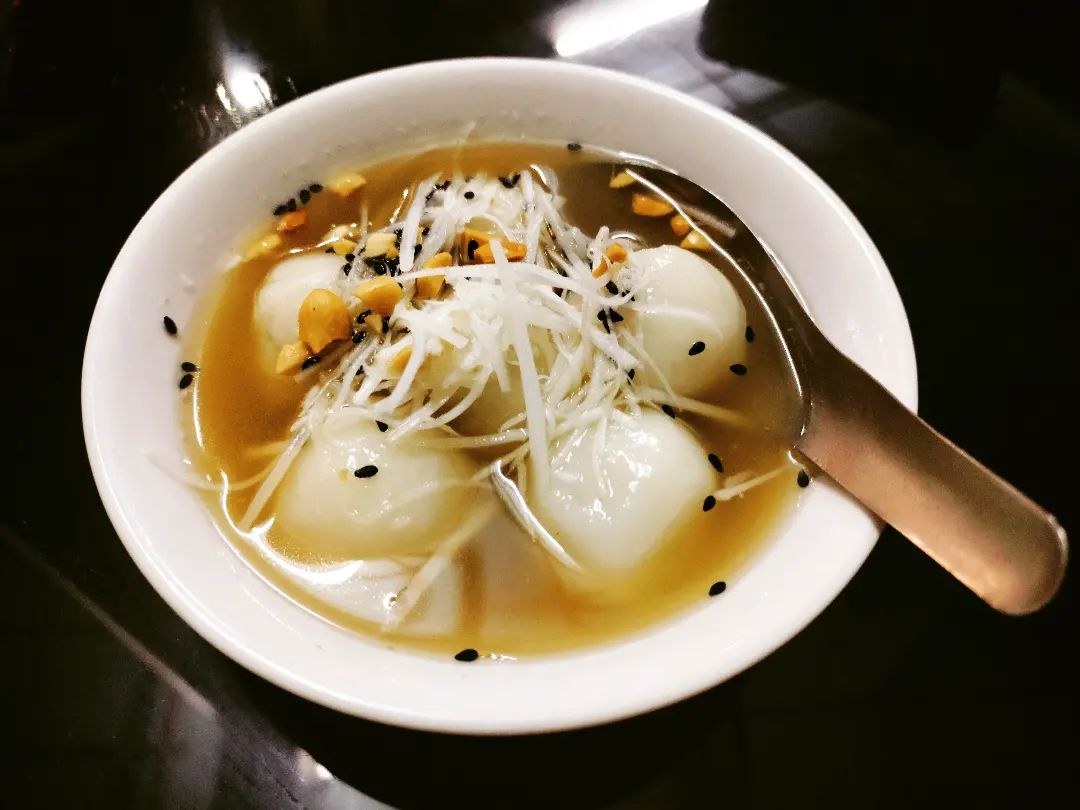
Sủi Dìn: A Hai Phong Specialty
The name “Sủi Dìn” sounds like it could originate from the ethnic minority groups in the mountains, but it actually traces its roots to the Cantonese language of China. It’s derived from “Thủy viên,” meaning “water ball” or “ball in water.” When it arrived in Vietnam, particularly in Hai Phong, the name evolved through local pronunciation, becoming a beloved dish. It’s sometimes referred to as a smaller version of Bánh Trôi Tàu (stuffed glutinous rice balls).
Crafting the perfect bowl of Sủi Dìn requires meticulous attention to ingredients. The main components include glutinous rice flour, fresh ginger, black sesame, grated coconut, and molasses or palm sugar. The rice used for the dough must be fragrant, plump, and evenly sized, with many opting for the premium Nếp Cái Hoa Vàng variety sourced directly from rural areas.
The rice is sun-dried to ensure the dough becomes chewy and aromatic when cooked. It’s then soaked in salted water for a day, with occasional water changes to prevent sourness, before being ground into flour. After several processes like settling and moisture removal, the dough is ready for shaping.
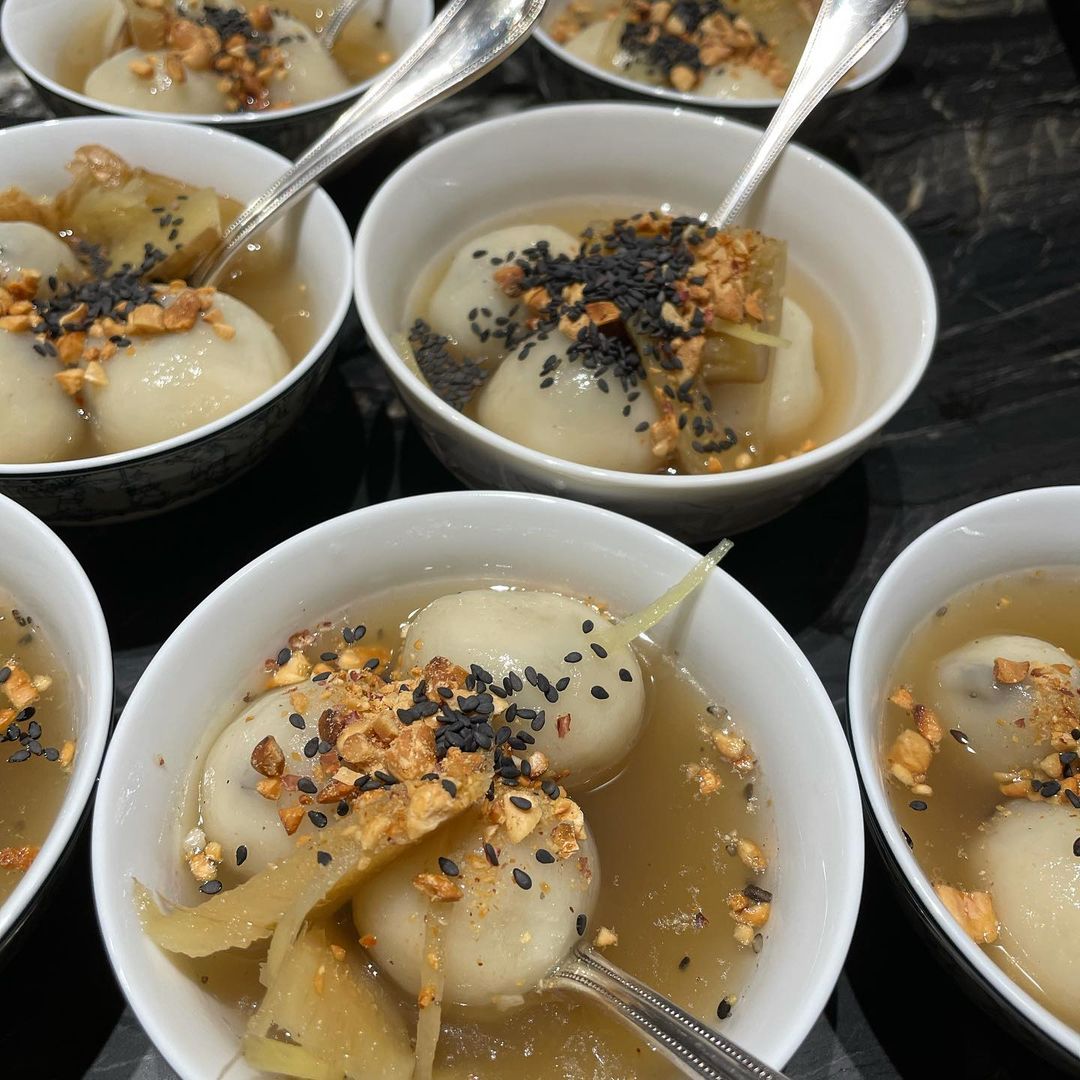
Don’t miss Sủi Dìn on a cool day
The filling is a blend of crushed roasted black sesame, peanuts, and grated coconut, gently simmered with molasses to achieve a rich, creamy texture. Shaping the balls requires precision—each one must be small enough to eat in one bite, with the filling securely encased. Skill is essential to ensure the balls don’t fall apart when boiled.
The syrup is made by simmering molasses or palm sugar with fresh pandan leaves and ginger for an hour over low heat, resulting in a fragrant, thick consistency. Once shaped, the Sủi Dìn balls are boiled until they float, then served in a bowl with grated coconut, roasted peanuts, black sesame, and hot syrup.
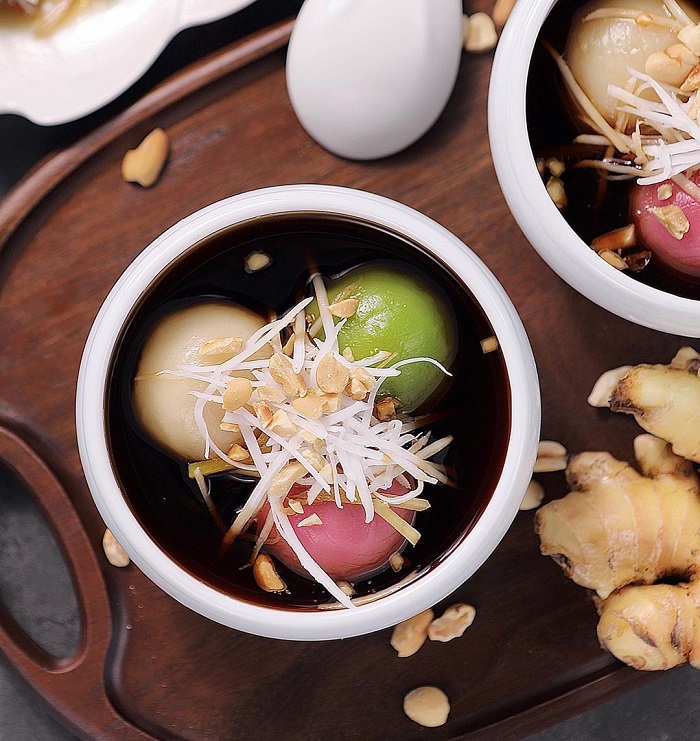
A colorful twist that’s as delicious as it is beautiful
Sủi Dìn is a must-try snack for anyone visiting Hai Phong, especially during cooler weather or the onset of winter. Unlike more extravagant dishes, this humble treat is affordable at just 15,000 VND per bowl, making it a favorite among locals and visitors alike. You can find it at popular spots like Chợ Ga market, Đền Nghè temple, and along streets such as Lương Khánh Thiện, Cát Dài, and Trần Phú.
The Sweet Science: Unraveling the Different Types of Sugar for Baking
Sugar is a familiar ingredient in daily cooking, but it is also an essential component in baking. However, there are many types of sugar, such as granulated sugar, powdered sugar, and more. Each type of sugar has a unique role in baking, and understanding their differences is key to creating delicious treats. Join us as we explore the world of sugar and discover the perfect sweet combinations for your baked goods!
Natural Sweeteners: Healthy Alternatives to Sugar for Cooking and Baking
Sugar is a staple ingredient in every kitchen, yet it is often underutilized compared to other spices and seasonings. For those on a sugar-restricted diet, fear not, as there are natural alternatives that can sweeten your dishes without compromising on taste. We will guide you through these sweet substitutes, ensuring your meals remain delicious and satisfying.

























